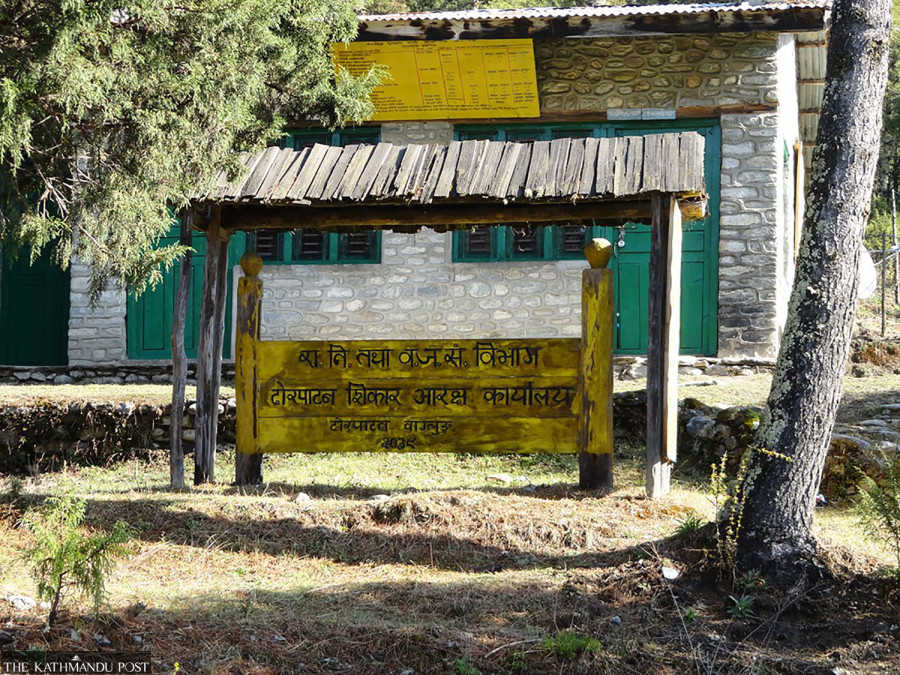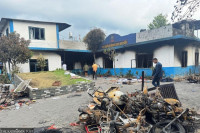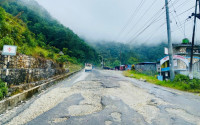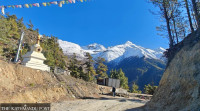Gandaki Province
Nepali hunters can now shoot wild boars in Dhorpatan
New rule follows complaints from local villagers about the increasing boar population and the destruction they cause to crops.
Ghanashyam Khadka
Game hunting enthusiasts of Nepal are now allowed to hunt animals in Dhorpatan, the only hunting reserve in the country, from this fiscal year.
Earlier only foreigners were allowed to hunt in the reserve.
The Department of the National Parks and Wildlife Conservation has decided to allow Nepali hunters to hunt wild boars in Dhorpatan in the first hunting season (mid-September to mid-December) of the current fiscal year. But Nepali hunting enthusiasts are prohibited from hunting Himalayan blue sheep (Naur) and Himalayan tahrs (Jharal)—the reserve’s major attractions.
“The department decided to allow Nepalis to hunt here with the objective of promoting domestic tourism, increasing revenue and protecting crops in the fields. Those interested to hunt wild boars in the reserve must submit tender bids. We will soon invite tender bids,” said Birendra Prasad Kandel, chief conservation officer at the Dhorpatan Hunting Reserve.
According to him, the recent development came following complaints from the locals about the increasing wild boar population and the destruction they cause to farmers’ crops.
“Earlier foreigners were allowed to hunt Naur and Jharal after taking permits. Besides Naur and Jharal, one foreign hunter could hunt one wild boar, one barking deer and 10 birds. Some of them used to hunt wild boars but most did not,” said Kandel, informing that the number of wild boars is increasing in the Dhorpatan Hunting Reserve and its buffer zone.
The Dhorpatan Hunting Reserve sprawls over 1,325 square kilometres along the Dhaulagiri mountain range in Rukum (East), Myagdi and Baglung districts. It was established in 1983 and was gazetted four years later. The reserve is divided into six blocks for hunting purposes. Approximately one-third of the reserve area is flat grassland, locally known as Patan, one-third comprises forests and hills whereas the remaining one-third is a buffer zone.
According to Kandel, separate hunting blocks have been designated for the hunting of wild boars on the basis of the density of its population. Hunting of the wild boars is designated at Dhorpatan valley in Baglung and Gurja area of Myagdi which have a high density of wild boars.
The Department of National Park and Wildlife Conservation invites hunting enthusiasts to hunt wildlife in Dhorpatan in the second or third week of September every year. After receiving permits, the hunters are allowed to hunt Himalayan blue sheep, Himalayan tahrs and wild boars in Seng, Ghustung, Dogadi, Barse, Phagune, Sundaha and Surtibang areas. Hunters from various countries visit Dhorpatan every year.
Hunting is allowed in two seasons—the first season runs from mid-September to mid-December and the second season runs from mid-February to mid-April. Hunters can enter the hunting block along with a liaison officer and the reserve’s permit. According to the existing legal provisions, the hunters cannot hunt the animals at night or kill baby and female of the species.
The Dhorpatan Hunting Reserve is home to 32 species of mammals and 130 bird species. According to the reserve office, there are around 852 Himalayan blue sheep and 200 Himalayan tahrs in the reserve forests. Snow leopards, Himalayan black bears, barking deer, spotted deer, red panda, wild boars, and Himalayan gorals among other wildlife are also found in the reserve but their hunting is prohibited. Himalayan blue sheep are the major attraction for hunters visiting the reserve.




 10.12°C Kathmandu
10.12°C Kathmandu










